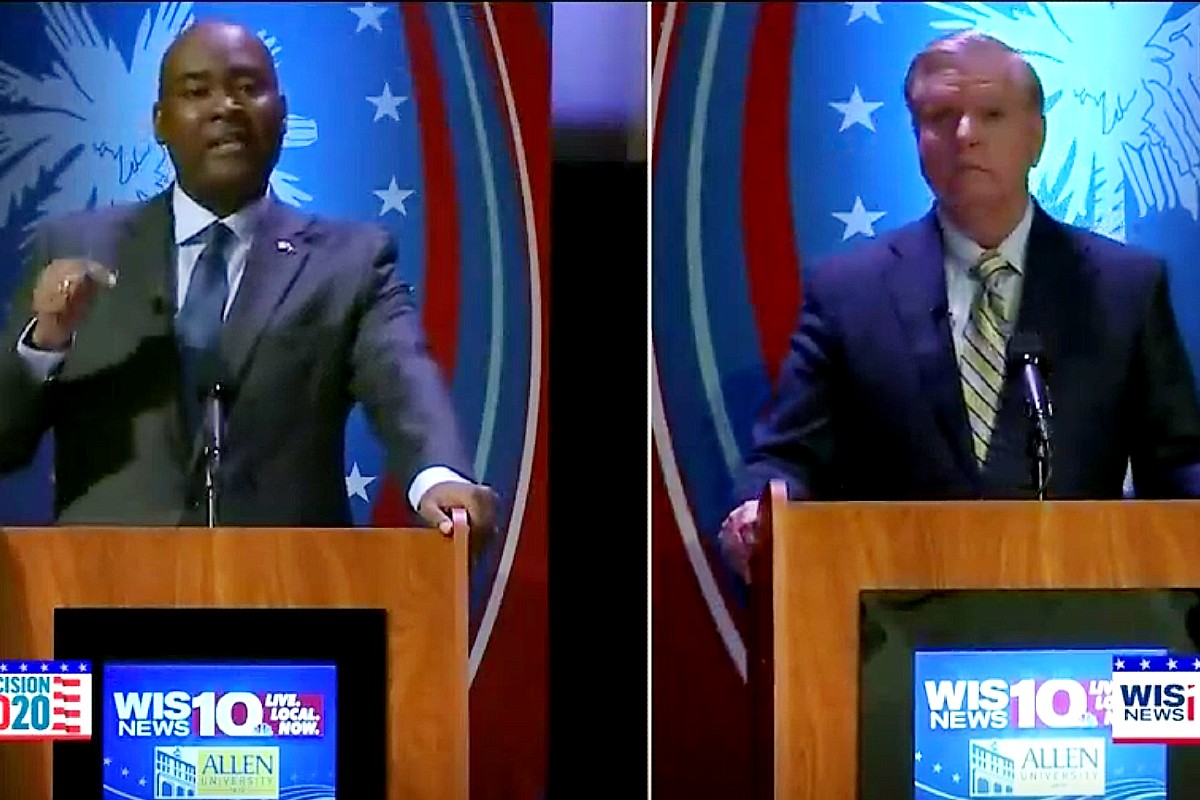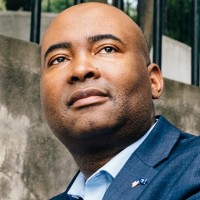
By Lindsay Street, Statehouse Report | The nationally record-setting third quarter fundraising for the U.S. Senate race in South Carolina has some wondering: what can be done with $85 million with just 18 days until the General Election?
“This is unlike anything we have seen in South Carolina before,” Furman University political science professor Danielle Vinson said.
Incumbent Republican U.S. Sen. Lindsey Graham and his Democratic challenger, Jaime Harrison, have set national records in third-quarter fundraising. Harrison’s campaign announced this week a whopping $57 million in contributions from July 1 to Sept. 30.
“Congratulations to him. That’s the most anybody’s ever raised in the history of the Senate,” Republican incumbent U.S. Sen. Lindsey Graham said Wednesday. “I raised $28 million, the most any Republican has raised.”
Together, the men raised $85 million in the last three months. Assuming they haven’t spent any of that money yet (and they most assuredly have) that would equate to $4.7 million a day from today until Nov. 3.
How will they use it? More of everything: More TV, more radio, more online, more mailers and more paid volunteers who text you, phone you and knock on your doors.
College of Charleston political science professor Gibbs Knotts said a 12-minute YouTube video he played for class was interrupted three times by Harrison. Vinson said it’s nearly impossible not to recognize Harrison’s face by now.
Close race

Graham has relied heavily on his warchest to keep his seat safe through the years, Knotts said.
“Graham has always been a good fundraiser,” he said. “He never anticipated someone being able to raise the money that Harrison was able to raise.”
The big money for Harrison has put Graham on the offensive. In the last month, Graham has made headlines for the amount of times he has solicited donations during TV interviews. This week, critics panned him for soliciting donations while inside a Senate building.
Knotts pointed to another Senate hopeful, Beto O’Rourke, who harried Republican incumbent Sen. Ted Cruz of Texas in 2018 with big money. He said the 2018 campaign is similar to Graham’s 2020 race where many people nationally did not like the incumbent and the Democratic challenger brought in big dollars to mount a surprise campaign.
And it showed something important, Knotts said: Money doesn’t always buy a win, as O’Rourke found out at the polls, losing by 215,000 votes.
And, so far, Graham has kept his edge despite bringing in fewer dollars. The national website FiveThirtyEight, as of Thursday, forecasted the race to favor Graham. A New York Times/Siena College poll Thursday showed a 6-point advantage to Graham.
In 2014, Graham received 672,941 votes of the 1.24 million ballots cast in that race. The rest of the votes were split among three candidates, including Orangeburg Democratic Sen. Brad Hutto, who received 456,726 votes.
Harrison, as then-chair of the state’s Democratic Party, recruited Hutto in 2014 to challenge Graham in the general election. Hutto said if he had $57 million on hand in the last quarter, “I would have won.”
“You can say, ‘Is Jaime doing [blank]’ and the answer is yes,” Hutto said. That means spending in big TV markets, online, mailboxes and more. “There is not a facet of how to run a modern campaign that he doesn’t have the money to do, so he’s doing it all.”
Big spending
Graham has hit Harrison in recent ads saying “liberals are trying to buy South Carolina” and “South Carolina is not for sale.” But both candidates have benefited from out-of-state donors, who made up the lion’s share of their purses, according to June 30 reports to the Federal Election Commission. They hover around a rate of $1 from South Carolina for every $10 from elsewhere.
“South Carolinians don’t tend to contribute in huge amounts so, yeah, if you’re raising this level of money even in Graham’s campaigns, you’d find a lot of out-of-state (donors),” Vinson said.
Regardless, Knotts said Graham’s message can resonate with voters wary of too much spending in politics. However, he said, research is thin on whether a candidate can spend too much money. And both Knotts and Vinson said it can help inform voters.
“We often think of money in politics and ‘oh that’s awful,’ but the reality is you need money in politics if you’re going to inform voters,” Vinson said. “If you want to be heard you’ve got to be able to reach the voters on your own and money is how you do that.”

Knotts said ads like Harrison’s recent 1-minute ad, narrated by actor Viola Davis, that focuses on his story and vision are “never going to backfire.” Negative advertisements should be limited, however, he said.
Vinson said sitting on a pile of cash can also mean sitting on a pile of ads that can be used under certain scenarios, like a game of chess, and deployed at a moment’s notice.
Harrison’s campaign has also spent money on ads that attack Constitutional candidate Bill Bledsoe for being more conservative than Graham. Bledsoe dropped out of the race and endorsed Graham, but remains on the ballot. The ad is seen as an attempt to attract conservatives to voting for Bledsoe, cleaving voters from Graham.
Knotts said it could work in a close election with Graham, who has always been “a little vulnerable” to candidates further right.
One of the keys to Harrison’s spending may be his ability to penetrate the expensive North Carolina-based TV markets that serve the Upstate, Vinson said.
Hutto said the Upstate is often written off for being a Republican stronghold because the counties are solidly red, but the Democratic votes there could add up for a statewide win. For example, one in nearly five S.C. voters who cast ballots for Democratic presidential candidate Hillary Clinton in 2016 resided in the red counties of Greenville, Spartanburg and York, representing a market larger than either Richland or Charleston counties, both of which voted Democratic.
Vinson said Harrison should also consider spending in markets to help down-ballot Democrats in tight races.
“Using it to help some of the other Democratic candidates where he may need to shore up some support (is possible),” Vinson said. “I could see that working in the First District with Joe Cunningham.”
Knotts said a vote for Cunningham is going to translate to a vote for Harrison, and that could also play out for Fifth District Democratic candidate Moe Brown, who is challenging Republican incumbent U.S. Rep. Ralph Norman. Cunningham’s race is expected to be close but in his favor. Norman is very likely to survive the challenge.
Meanwhile, Graham has doubled down on the Senate confirmation of Supreme Court nominee Amy Coney Barrett, a conservative appointment by President Donald Trump. Graham’s role as head of the Senate Judiciary Committee has afforded him expense-free national coverage, which he has used to highlight his record on extra-judicial issues.
Other campaign spending will likely include more paid volunteers and funding transportation for voters throughout absentee voting and on election day, Vinson said. She added community efforts to get out the vote — such as Harrison Helps, the Harrison campaign’s boots-on-the-ground helping initiative — will be well-heeled.
And don’t forget: candidates don’t have to spend all their cash ahead of Nov. 3. That money can be used for future campaigns — meaning a deep pocket for whoever loses in the general election, Vinson said.
- Have a comment? Send to: feedback@statehousereport.com
















 We Can Do Better, South Carolina!
We Can Do Better, South Carolina!
Pingback: Charleston Currents – NEW for 10/19:
Pingback: Charleston Currents – NEW for 10/19: On cancer, health care policy and women’s march
Pingback: Charleston Currents – NEWS BRIEFS: Holiday Festival of Lights set to kick off Nov. 13